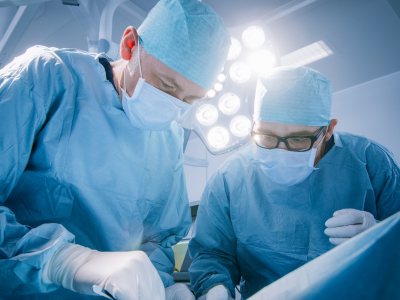
Surgical treatment of COPD
Surgical treatment of COPD is typically only used for severe or end-stage disease that has not responded well to other treatment.
Surgical treatment of COPD is typically only used for severe or end-stage disease that has not responded well to other treatment. Your doctor will determine if the possible benefits of the procedure outweigh the potential risks. They will consider your age, any comorbidities you may have, whether or not you smoke cigarettes, psychosocial factors and your potential for improved quality of life following the procedure.
Lung volume reduction
As the damaged lung tissue expands and becomes stretched out, there is less space for the healthy parts of your lungs to expand as you breathe. If the damaged portion of the lung(s) is limited to certain areas, it is possible to remove those sections of lung to allow for the undamaged portions of the lungs to work better, which will make breathing easier.
Lung valve placement
Emphysema causes the lungs to overinflate with trapped air, which makes it difficult to breathe. One option for people with emphysema that doesn't respond to other treatments is lung (endobronchialvalve) valve placement. Using a bronchoscope (a long, flexible tube with a camera at the end), the doctor inserts a one-way valve into the most damaged portions of the lungs. The valve opens when you exhale, which allows air and other secretions to escape. The valve closes when you inhale, blocking air from getting trapped in the damaged portion of the lungs.
Lung transplant
A lung transplant can involve a single lung or replacement of both lungs. Double lung transplants are much more common. In 2022, 331 double-lung transplants were performed in Canada, and 18 single-lung transplants. Note that these figures include all recipients, not only recipients with COPD.
